On Borinquén/Puerto Rico
by Léuli Eshrāghi and Lucas LaRochelle
April 1, 2019
In February, Postdoctoral Fellow Léuli Eshrāghi and Undergraduate Research Assistant Lucas LaRochelle attended the Sites Queer: Technologies, Spaces, and Otherness conference in Borinquén (Puerto Rico) at the University of Puerto Rico.
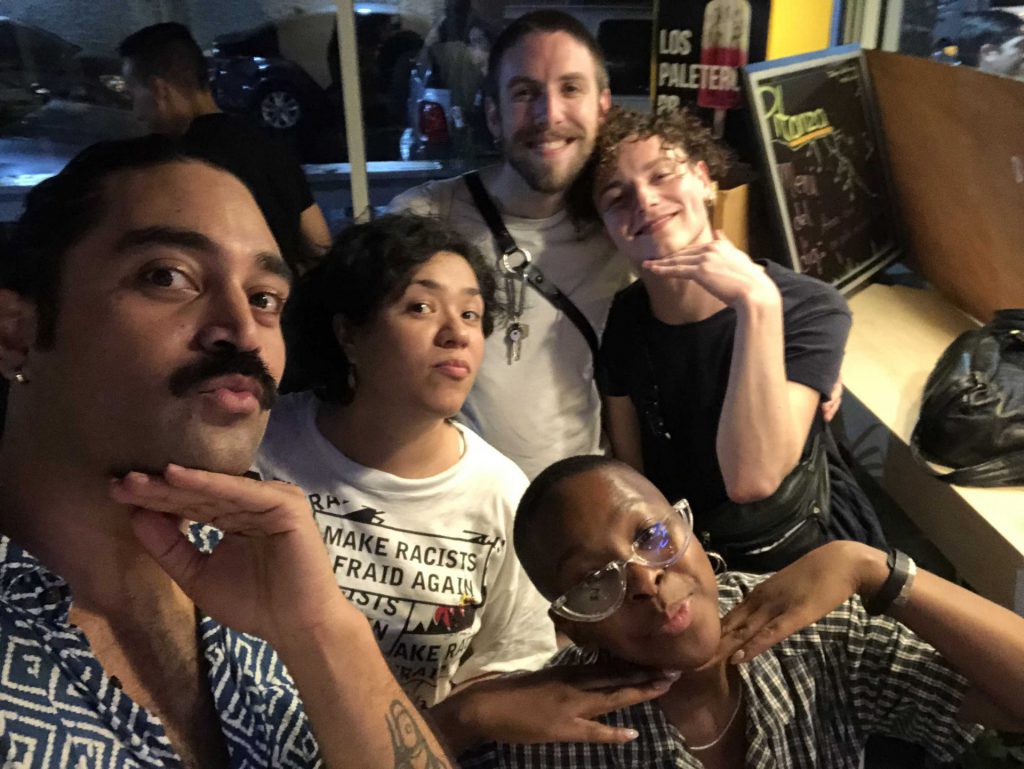
It was a gift to take part in the Sites Queer conference at the University of Puerto Rico – Río Piedras School of Architecture, organized by Dr. Regner Ramos.
The informal space around the panels and presentations yielded the most fruitful dialogue—in turn generating new, and likely longlasting, kinship networks. The house that we cohabitated became a site of queer kinship that wasn’t predicated on transactional sex but rather a space of mutual support, encouragement. I was especially grateful for this when the digital project I had come to present crashed unexpectedly as a result of receiving 3000 new submissions in a period of 6 hours. What would have otherwise resulted in a lonely anxiety spiral was softened by words of encouragement and the physical closeness of nènè and Léuli as we convened around the dining room table.
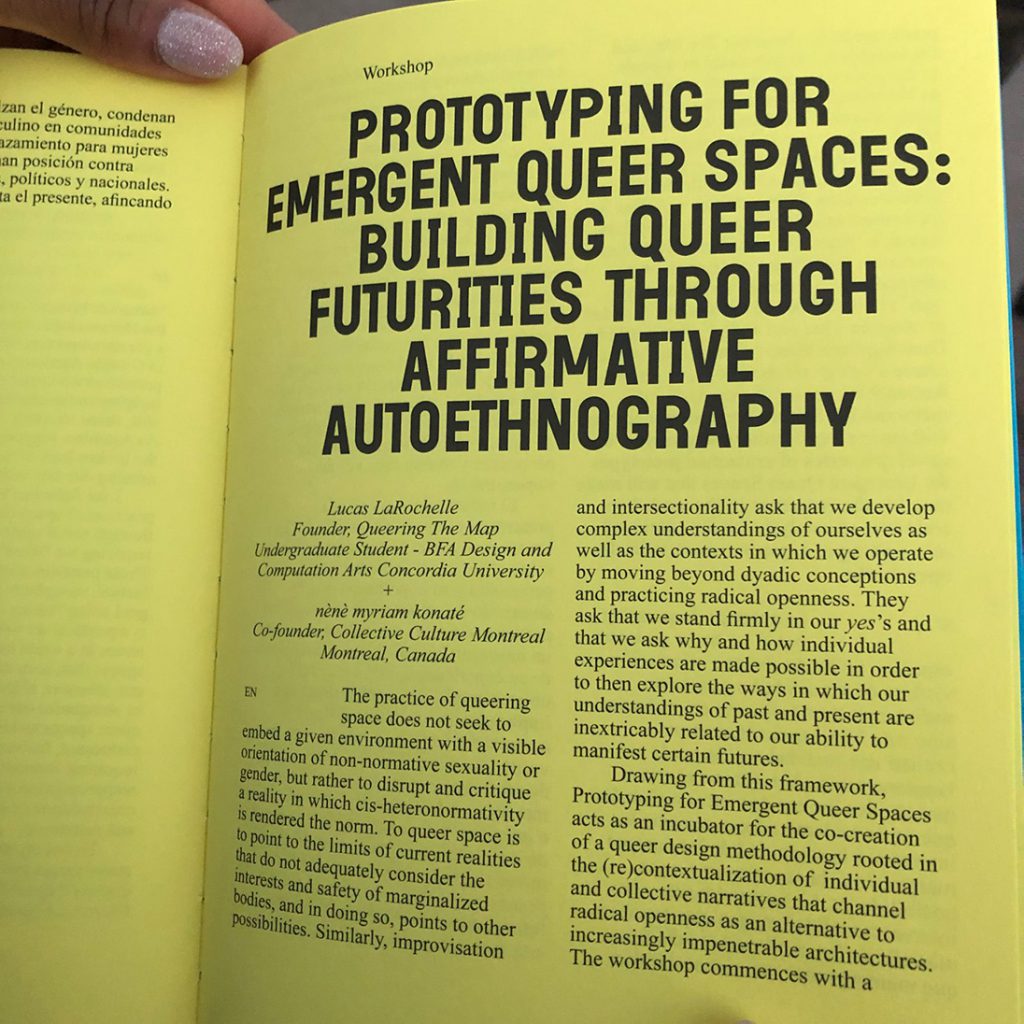
On the final day of the conference, nènè myriam konatè and I led our workshop Prototyping for Emergent Queer Spaces with a group of about 14 new kin from Borinquén/Puerto Rico, Tiohtià:ke/Montreal, Tkaronto/Toronto, Mannahatta/New York, Shawmut/Boston, Checaugou/Chicago and London. We began the workshop by collectively sharing stories of queer experience with particular attention to the role of place within these narratives. What was intended to be a one-hour storytelling session extended laterally into a three hour outpouring of queer feeling, traversing intergenerational care, non-sexual intimacies, family, death, racialization, diasporic identity, sexual harassment, transhumanist becoming, among other tentacles of experience. From here we moved into the prototyping session of our workshop, in which we reframed our stories through nènè’s yes and also… methodology, which encourages us to come to new understandings of our self-concepts by replacing negations with affirmations. Drawing from our reframed personal narratives, we prototyped speculative queer futures composited from our experiences of joy, pain and resistance.
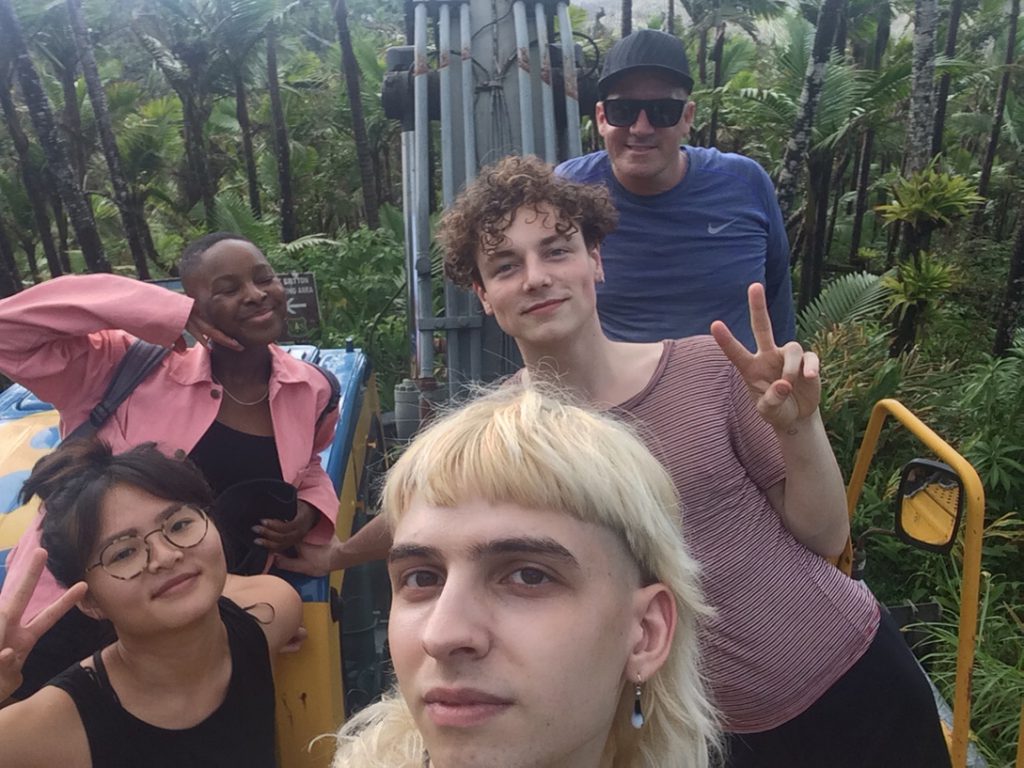
Our final day in Borinquén/Puerto Rico was spent at El Yunque, a rainforest in the northeast of the island. Jason Baerg shared with us the proper protocol to thank the Taíno, on whose territory we had stayed the past five days. We reflected on the imposition of the poured concrete path that structured our movement through the rainforest, and the ways in which it inhibited the kinds of relations were possible with all of the non-human life that enveloped us. That the concrete path functioned as an infrastructural tool that drew a harsh line between the human and the non-human – the rainforest as something to be looked at, consumed and contained rather than something to form an equitable relationship with. The colonial implications of these architectural interventions came into sharper focus upon seeing bright orange plastic barriers littered throughout El Yunque. Bearing the insignia of the US Forestry Department, the barriers route flows of human and non-human life and underscore Borinquén’s continued occupation by the American Empire.
Lucas LaRochelle
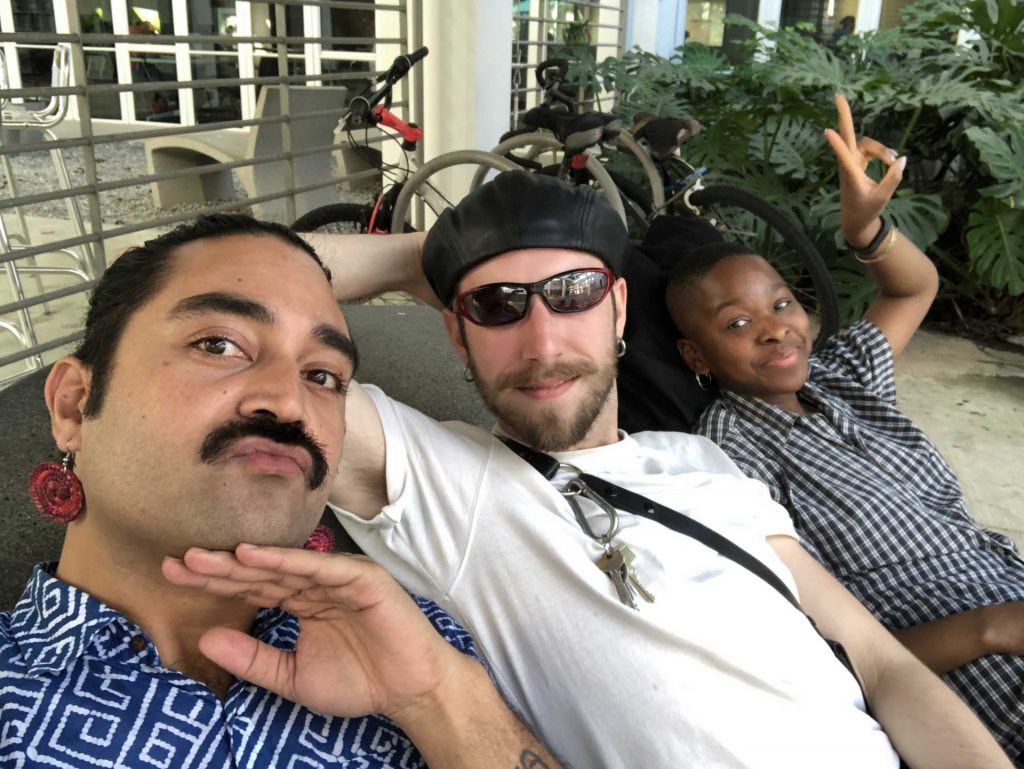
The specificities we were learning on each day of the conference about the colonization of Borinquén by the United States after Spain struck and stuck with us. On the periphery of the American Empire, the tropical heat was so familiar and encompassing whilst still a departure for our sensibilities from the winter wonderland of the Canadian Shield and its cities. Compellingly, the generosity between and beyond the two languages occupying space in the same place at the same time in the Sites Queer conference—Puertorriqueñx Spanish, American English—also enabled the francophone delegates to converse freely without the usual defensiveness of anglophones in Canadian contexts.
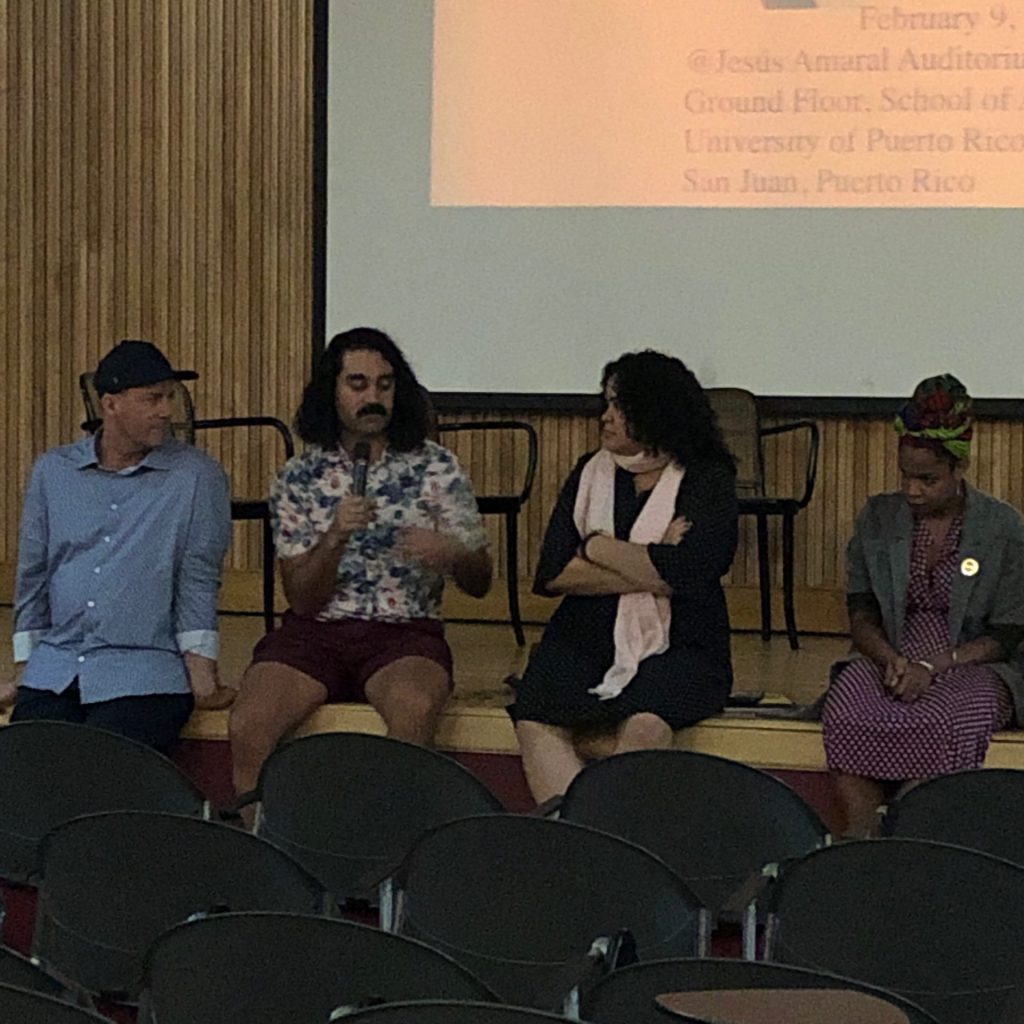
The parallels also between processes of recovery and resurgence in queer Indigenous practices, networks of care, histories embodied and enlivened within Jason Baerg and my own presentations—and nascent conversations and aesthetic interventions into Puertorriqueñx Indigeneity—were emotionally and spiritually important. The intervention into the Euro-American theoretical and historical dominance of capitalized Queer Theory and Queer Art History that networked global Indigenous artistic and curatorial practices bring into being was another welcome departure from United States-specific discourses. These fail to link Indigenous resurgence and peripheral American territories’ claims to self-determination as being interlinked with queer freedoms embodied and socialized. Indeed, the illegal overthrow of Queen Liliʻuokalani in the sovereign Hawaiian Kingdom in the 1893-1898 period and the seizing of Borinquén/Puerto Rico, Cuba and the Philippines from the Spanish Crown are integral points in the development of the armature of empire—this time a carceral settler-colonial state that punishes perceived deviance from Caucasian heteropatriarchal norms.
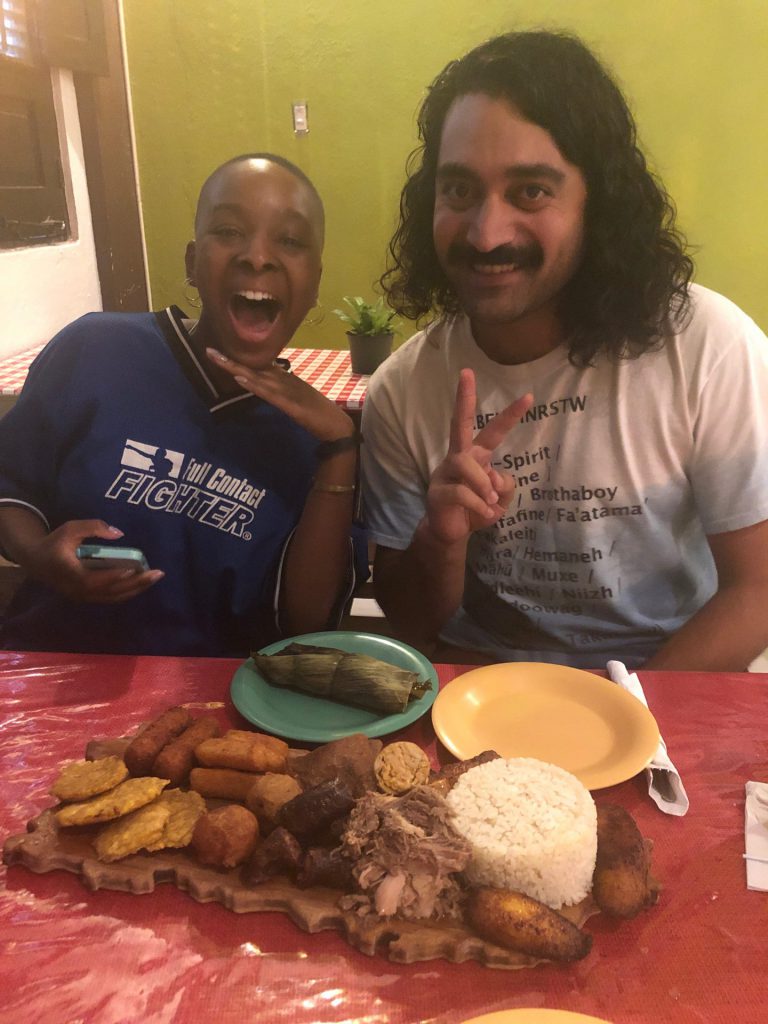
New sustained relationships with kin from near and far garnered through all our presentations, participation in the workshop, and hanging out—particularly the queer architectures exhibition opening on campus curated by convenor Dr. Regner Ramos, the Drag King night at a local queer bar, the unexpected gift of a free Princess Nokia concert in support of the brutalized local trans queer non-binary community following a savage murder weeks earlier, and time visiting in Old San Juan, the beach, and the forest in El Yunque proved this journey to be much more than salvatory, but a transformational experience. Muchísimas gracias a todxs.
Léuli Eshrāghi
